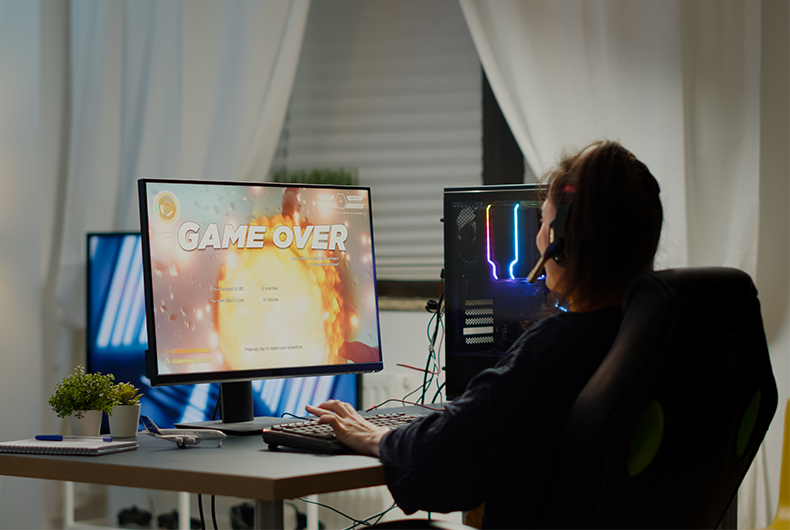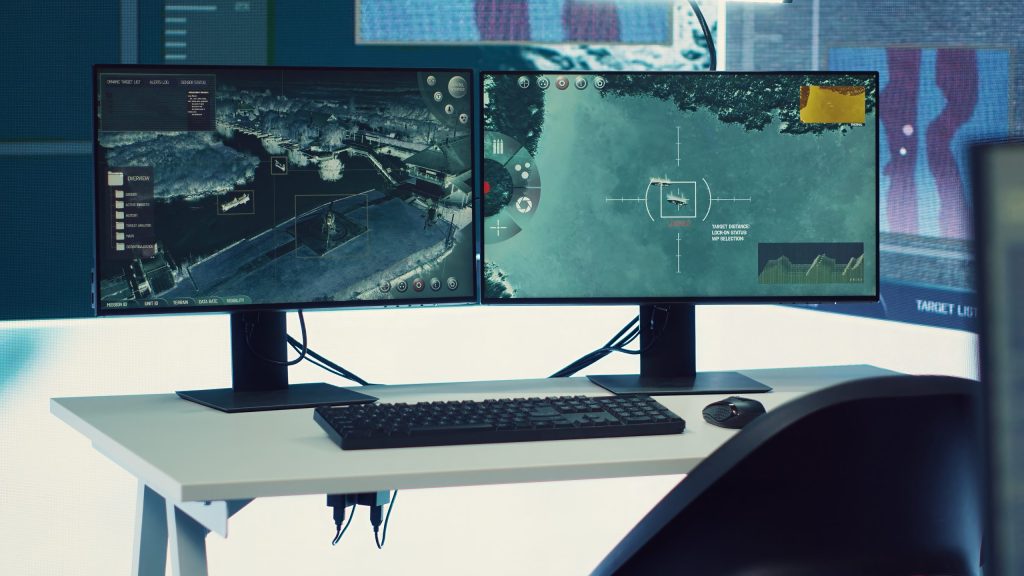
The monitor on your desk often does more heavy lifting than any other piece of hardware. Whether you’re deep into a late-night gaming session or tackling spreadsheets during the workday, the screen you use directly shapes your experience. Choosing the right monitor is about matching your setup to your actual needs, so you get performance, comfort, and value in one package.
Below, we’ll break down the most important factors to consider when shopping for a new monitor, whether your priority is responsive gaming or productive workdays.
The first thing most people notice about a monitor is its size, but bigger isn’t always better. For work, a 24–27-inch monitor is often ideal, giving enough screen real estate for multitasking without overwhelming your desk space. For gaming, especially immersive titles, a 32-inch or larger monitor can add cinematic depth.
Resolution ties directly to size. A 1080p monitor may be sufficient for everyday office use, but when paired with a large screen, text and visuals can appear blurry. For most users, 1440p hits the sweet spot, delivering crisp detail without demanding extreme graphics power. Gamers aiming for the sharpest visuals may want to consider 4K monitors, provided their hardware can support it.
If you’re a gamer, refresh rate is non-negotiable. Standard monitors refresh at 60Hz, which is fine for word processing or browsing, but in gaming, it can make fast motion appear choppy. Monitors offering 120Hz, 144Hz, or even 240Hz provide buttery-smooth visuals, making everything from shooters to racing games feel more responsive.
Response time is equally important. This measures how quickly pixels can change colour, affecting how sharp fast-moving objects look. For gaming, aim for 1–5ms response times. For work, slower response times won’t make much difference unless you regularly edit videos or graphics.

Monitors come with different panel technologies, and each has strengths.
For most users, IPS strikes the best balance between work and play. Many Dell monitors and Lenovo gaming monitors use IPS technology, making them versatile choices for people who don’t want to compromise between productivity and entertainment.
Your monitor is only as good as the devices it connects to. For modern PCs and gaming consoles, HDMI 2.0 or DisplayPort connections are essential for high refresh rates and resolutions. USB-C ports are becoming more common, especially for work setups where laptops need charging and display support through a single cable.
If you plan to connect multiple devices, like a gaming console, work laptop, and desktop PC, look for a monitor with multiple input options and an easy-to-navigate on-screen menu for switching between them.
A good monitor should make long hours at your desk more comfortable. Adjustable stands that allow you to tilt, swivel, and change height are invaluable for reducing neck and eye strain. Some monitors also offer pivot functionality, letting you rotate the screen vertically—a handy feature for coders or anyone working with long documents.
Eye-care technologies like blue light reduction and flicker-free displays can also make a difference if you’re in front of the screen all day. These are particularly useful for hybrid users who switch between gaming marathons and full workdays.
Price is always part of the equation. Luckily, the monitor market offers options for every budget. Entry-level monitors can start under £150, giving casual users affordable access to reliable screens. For gaming enthusiasts, mid-range options between £300–£600 often deliver a balance of performance and features like high refresh rates. Premium models—ideal for competitive gaming or professional editing—can climb into the £1,000+ range.
The important thing is to align your purchase with your needs. If your priority is smooth gameplay, focus your budget on refresh rates and response times. If you’re a creative professional, colour accuracy and resolution should come first.
When it comes to brands, Dell monitors are well-regarded for work environments, offering reliability, excellent ergonomics, and crisp visuals. For gamers, Lenovo gaming monitors have gained popularity for combining high refresh rates and strong design at competitive prices. Both brands have models that cater to dual-purpose users—those who want their setup to handle both productivity and gaming without compromise.
Picking the perfect monitor for gaming and work is about understanding your balance of needs: Do you prioritise silky-smooth gameplay, or do you need crystal-clear detail for editing and multitasking? With careful consideration of size, resolution, refresh rate, panel type, and ergonomics, you can invest in a monitor that will serve you well for years.
At Cloud PC & Laptops, we stock a wide range of monitors designed for both work and play. Whether you’re leaning toward the professional reliability of Dell monitors or the high-performance edge of Lenovo gaming monitors, we’ve got options to match your budget and setup. Browse our latest collection today and find the screen that makes every hour at your desk more enjoyable.
Building your own gaming PC is one of the most rewarding experiences for any gamer. Not only do you get full control over the hardware, but you can also tailor the machine to your specific needs, whether that’s ultra-smooth frame rates, breathtaking visuals, or future-proof performance. In this guide, we’ll walk you through the essentials […]
The monitor on your desk often does more heavy lifting than any other piece of hardware. Whether you’re deep into a late-night gaming session or tackling spreadsheets during the workday, the screen you use directly shapes your experience. Choosing the right monitor is about matching your setup to your actual needs, so you get performance, […]
When it comes to buying a PC, or even the best gaming PC in the UK, you’ll often face a common decision: should you go for a brand-new model straight out of the box or pick up a used system that has been refurbished and tested? Both options have their appeal, and both come with […]






Shop PC and laptops with the best deals. Refurbished and new. Cloud PC & Laptops – Best Prebuilt PC Company in the UK with fast delivery and friendly support.